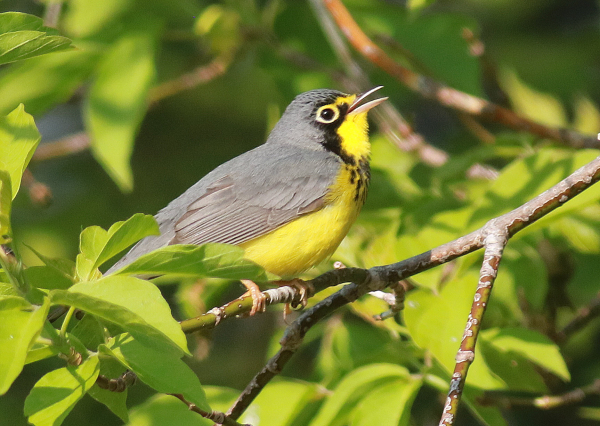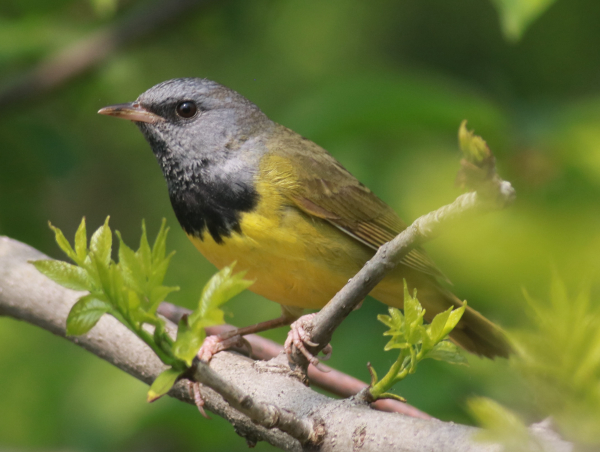
As bird photographers, we are lucky to have a lot of best photos. Each year we get a little better. Our techniques improve. Our equipment gets a little better. And we work a little harder at enjoying our photo experiences more. But our bests are always tied to many things we have no control over. First, the birds! And they are a fickle lot. Hard to predict, impossible to direct, and always alluring. Then there is the light, and the weather, and timing, and perhaps the biggest factor of all – Luck!
What will the next day bring? Or the next moment? Bird photography, like birding in general, can be a remarkable experience – time and time again!
This year I was more than ready to intensify my warbler photography and expand my photo files, both in the number of species I have adequate photos for, and the quality of the photos for each species – and just to update my files with some new images.

I would try for lively, active, colorful images – with improved lighting, background, and setting. Obviously, you can’t do too much planning when you’re photographing birds, much less the fast moving, twitchy, twisty, hopping, flying actions of these little dynamos. But you can try to pick your times, including the times a given location has the best light, and the most activity.
This year, unless it was raining or nearly raining, during warbler season I photographed through it all – I just kept showing up and photographing – hoping the camera would do its work, and that the birds would cooperate; and that I had the fast reactions and instincts that would yield the best photos possible.
Then too, I could never have imagined the quality of the warblers and other songbirds I intercepted by making an early trip to the Great Black Swamp on the southwest shore of Lake Erie. That was an amazing experience and a super photo opportunity. It gave me lots of practice and a lot of confidence for what was to come. Even before I left Dakota for Ohio though, I had an afternoon of similar practice and experience when a little fallout of Yellow-rumped Warblers visited a lakeside photo hotspot south of home.

Melody’s Warblers
With the late spring, I’m confident I didn’t miss any warbler action at my local warbler hotspot, just 200 yards from my house. I enjoyed a remarkable week of warbler action there, starting the Friday of Memorial Weekend, and continuing through last Thursday. Even with a few years of warbler experience, in the early 2000s and from 2017 through today, I had no idea how diverse the warbler species would be this year at my warbler hotspot – Melody’s Grove. I was lucky enough to observe and photograph many new species I’ve never seen in this state, one species I’ve never seen before May (Canada Warblers), and one that I’ve never seen before – anywhere (Connecticut Warblers). The warbler parade certainly provided an exceptionally exhilarating time, day after day, with many exceptional photo opportunities that jolted me from a relaxed moment surrounded by nature to a heart-racing sighting and subsequent photo excitement.
Nothing can beat good lighting conditions for any kind of photography, but I pushed the limits of poor light conditions with the hope that my camera would compensate for the lack of light. I was happy with the compromise in a number of instances, and I even featured a couple of the low-light images in my Editor Afield article in last week’s issue (May 29). The Magnolia Warbler photo and the Northern Parula image were taken in low light, and although they don’t look as sharp as they might be in the best light, their colors show a pleasing level of saturation that often comes in a low light setting.
I also wanted to try to improve the backgrounds in photos. Too often, warbler photos can be filled with distracting twigs and lines from branches, long pine needles, or grasses, so I settled into using an aperture of f6.3, which I preferred over f5.6, to try to limit the amount of background noise by reducing the area in focus. If you keep aware of the bird’s background and surroundings, you can improve the chances of getting better photos overall. I also kept very aware of the foreground, and especially the leaves or flowers on each side of a given bird.
A technical aspect of photographing quick-moving warblers that I became more aware of, and that I want to pass on to you, is to be sure to allow your auto-focus to fully focus on the bird – before you take the photo. I found that from time to time, I was pressing the shutter button before the auto-focus action was complete, which resulted in a blurred image and the need to refocus. That happens when your reaction time is on highest speed; but it doesn’t help to be fast if you’re too fast. Make sure you have a totally in-focus bird in your viewfinder before taking the photos.

Having shared about all I can about my exceptional warbler photo experiences this May, I’m glad to share that all my hopes were fulfilled at a far higher level than I could perceive in advance. Having said that, herein I am sharing a collection of four photos that I consider among the best bird portraits I have ever taken. Yes, during the past week I believe my photos of the Mourning Warbler and the Canada Warblers are among the best I have taken over the decades I’ve been photographing birds. How kool is that!
Article and photographs by Paul Konrad
Share your bird photographs and birding experiences at editorstbw2@gmail.com